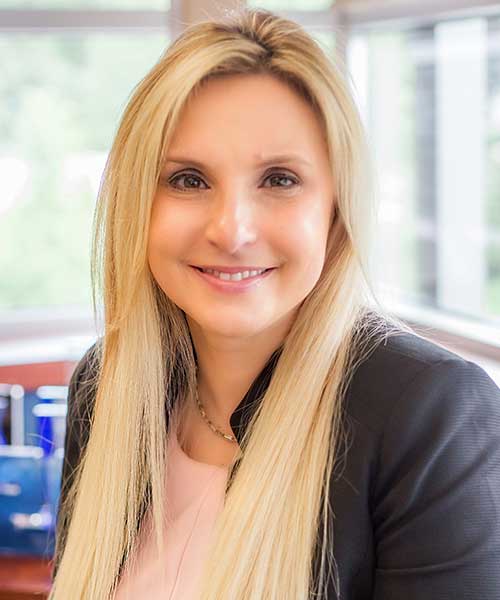
Embracing lendtech
Leveraging fintech firms’ nimble culture and tech savvy creates a ‘rising tide lifts all boats’ approach to digital lending.
Credit unions have long faced intensifying competition from nontraditional lenders targeting specific segments and gradually expanding their reach—think SoFi, Rocket Mortgage, and OnDeck—as well as large banks with seven- and eight-figure marketing budgets.
This challenge predates the recent period of inflated deposit balances that financial institutions of all stripes strained to put to productive use. And the pandemic merely exacerbated another trend that was already well underway: a steady decline in branch traffic as many consumers and business owners demonstrated a preference to perform financial functions digitally.
The necessary closure of walk-in facilities neutralized a big credit union advantage: the intimacy of in-person member relationships.
Fintech firms are often cast as the villain in this battle for hearts and minds in the digital arena— and in cases like the previous examples, for good reason. Increasingly, however, these innovative firms, less constrained by regulation, are leveraging their nimble culture and technology savvy to partner with credit unions, opting for a “rising tide lifts all boats” approach.
Three credit unions, each with distinctly different profiles, explain how they’re deploying lendtech solutions within their organizations.
A deeper digital experience
All In Credit Union has 30 branches, all within a four-hour drive of its operations center in Alabama near Fort Rucker, the only Army base providing helicopter training to its servicemembers. Like many military-affiliated credit unions, All In sees its members fan out across the country and overseas.
Sure enough, the $2.7 billion asset credit union in Daleville, Ala., serves members in all 50 states. Not surprisingly under those circumstances, two-thirds of its loan applications are submitted online.
Todd Peeples, senior vice president of sales and lending, felt an acute need to upgrade that digital experience. “You couldn’t save an in-process application, you had to hand-key all information,” he recalls.
All In had already been working with Zest AI for roughly two years, leveraging the firm’s artificial intelligence (AI) solution for auto decisioning. It uses Zest AI to automatically approve or deny 75% of its auto, boat, and recreational vehicle loan volume, Peeples says. “The remainder in the gray area we refer to staff to take care of. Zest AI’s solution also decisions essentially 100% of credit card applications.”

‘We've taken the philosophy of partnering with them vs. seeing them as competition, and it's paid huge dividends for us.’
Todd Peeple
It was the earlier portion of the funnel, before a completed application arrived, that still required enhancement. Enter 3-year-old fintech WithClutch, which now facilitates digital applications for All In’s entire loan portfolio except mortgages and home equity loans. It predominantly supports auto refinancing.
“It prefills the form based on the applicant’s phone number and last four Social Security digits, then cross-sells both on the spot and feeds leads to our reps,” Peeples explains. “It’s really simplified the member process. It even provides the VIN [vehicle information number] and says, ‘Here’s a picture of your 2020 Ford F150. Would you like to refinance at this rate?’ It’s definitely helped our numbers.”
Peeples has documented a 10% to 15% lift in closings even before factoring in the cross-sell benefit. For every 100 applicants the credit union receives online via WithClutch, the system generates 145 loan applications, equating to a 45% cross-sell rate.
Through their work at All In, WithClutch and Zest AI realized the natural synergy that existed between their offerings and tightened their integration, enabling greater speed to market for mutual customers.
Peeples, who has been in sales leadership for more than five years, brings a unique perspective to his role. “We’re proactive with tech. My background is a little different: Before I was the head of lending, I was the head of IT.”
All In also works with lendtech providers such as Coviance (for home equity lending), CuneXus, and Caribou, with additional projects in the works.
“We have partnerships with fintechs that bring us loans, and with others that improve our processes,” Peeples says. “We’ve taken the philosophy of partnering with them vs. seeing them as competition, and it’s paid huge dividends for us.”
While he’s always on the lookout for promising new solutions, Peeples finds that All In’s tech-forward reputation has streamlined that task as well. “We’ve been open enough that folks now are coming to us. More fintechs are seeing the possibilities with credit unions, realizing we’re easier to work with.”
NEXT: Combating competition
Combating competition
Like many credit unions of its size, $354 million asset AgFed Credit Union in Washington, D.C., had struggled to compete for loans, says CEO Margie Click, citing growing competition from both nontraditional lenders and larger institutions.
“LendKey was one of the first third parties we worked with,” she says. “A small credit union peer mentioned their LendKey relationship. When we spoke with them, we discovered we’d be able to serve as a lead lender in the participation pool.”
LendKey’s flagship product involves student debt refinancing. It began operations in 2007 using a peer-to-peer lending model before pivoting in 2013 to credit union and bank partnerships, continuing to market to student borrowers but relying on financial institution partners for the financing.
“My board was skeptical about student loans and the potential risk, but taking 10% of a loan through a refinance/consolidation participation pool made it comfortable for them,” Click says. She clarifies that the initial hesitancy involved “headline risk,” and that those concerns dissipated as data rolled in. “We had great volume, and delinquency rates were good.”
AgFed soon realized an additional benefit was the borrower profile. “The members LendKey brings in are from the younger generation, giving us a more diverse field of membership,” Click says. “It also helped our loan growth and improved our yield with acceptable risk.”

‘How we define our core channel is changing.’
Margie Click
She emphasizes this is hardly a “set it and forget it” solution, however. “You can’t just do it and never look at it again.”
LendKey provides ready access to individual loan records for ongoing risk diligence, Click says, adding “you can’t just close your eyes; you need to spot check.”
With student lending having served as a proof of concept, AgFed turned to third parties for other types of loans as well. Upstart generates personal loan demand. After switching auto loan providers two times—AgFed noticed profiles becoming riskier over time, reinforcing Click’s point regarding the need for ongoing diligence—Caribou has now established itself as the partner for that channel.
LendKey also provides home improvement loan candidates for which AgFed retains 100% of the balance as opposed to the syndicated student loan model.
At this point, roughly half of AgFed’s origination volume comes through these partner channels. This is a welcome development as it’s become increasingly challenging to generate loan applications in the branch.
Foot traffic is down markedly at AgFed’s main location in the U.S. Department of Agriculture headquarters since 2020, as many of the anchor tenant’s employees continue to work remotely. This makes online visibility all the more important.
What many credit unions consider a supplemental channel has become core to AgFed’s business. “How we define our core channel is changing,” Click says. “We include some of these third parties in our core now as we continue to deepen these relationships.”
NEXT: Process improvement
Process improvement
Cornerstone Community Financial Credit Union in Auburn Hills, Mich., approaches the lendtech space from a much different starting point. The $420 million asset institution has maintained a 110% loan-to-share ratio for some time.
“We weren’t looking to gain market share so much as to keep the demand going and to improve the process,” CEO Heidi Kassab says of her management team’s decision to implement CuneXus’ digital lending solutions.
As recently as 2021, only 17% of Cornerstone Community’s loan applications were submitted digitally, requiring significant manual effort to perform prescreening for outbound offers. By 2022, this share had risen to 24%, still before the CuneXus implementation.
The credit union waited until CuneXus had established connections with its loan origination system. “Integrating with the core is how you get good data,” Kassab says.
Cornerstone Community was also among the first to roll out CuneXus’ integrated credit score platform, introducing another member benefit.
After two months live with CuneXus, digital submissions comprise 40% of loan application volume. Part of this gain reflects channel shift, which Kassab acknowledges has caused discomfort in some corners.
“Everyone has loan goals,” she says. “But we also recognize that branch volume is down 20% to 25% post-COVID. We know the consumer is now much more comfortable with fintech. They’re already using these types of solutions, so it will probably get tougher to retain our loan-to-share ratio.”

‘We know the consumer is now much more comfortable with fintech.’
Heidi Kassab
Although CuneXus’ model is optimized for digital channels—68% of the company’s volume comes from mobile devices—17% can also be traced to branch activity. “The platform does allow for in-branch upselling,” Kassab says, allowing tellers and other member service reps to convey pre-approved offers or other prompts verbally.
The solution has also unearthed entirely new opportunities.
“You think you have all the demand you’re going to see, then you reach new members you weren’t touching before, probably because they weren’t coming into the branch,” she says. This hard-to-reach segment was unlikely to respond to outbound calling campaigns.
Although Kassab sees lending as the easiest avenue to break into the fintech space, Cornerstone Community also partners with companies such as Pulsate and Atomic for direct deposit adoption. Her team is on the lookout for “any processes that can be improved upon, make us quicker to market, and be quickly embraced by membership and staff.”
She’s particularly interested in AI’s potential for lending decisions and call center efficiency, not to replace staff but to focus them more directly on the member experience.
In these difficult hiring times, however, the contingency benefits are clear. “When our senior management meets every three weeks, at the top of the agenda is always, ‘what can we do better/smarter/quicker/easier?’ and ‘is there a fintech out there we should be looking at?’”
GLEN SARVADY is managing principal at 154 Advisors. Contact him at glen.sarvady@154advisors.com.